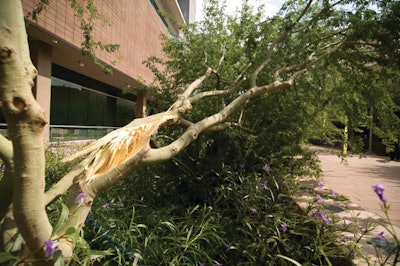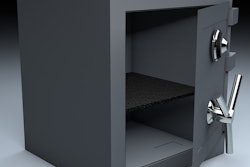
Many areas are being hit by powerful storms and tornadoes this spring. Strong winds and heavy rain can do a number on trees and power lines. Damage can range from a mess of loose leaves, to fallen branches and trees. Use these tips to prevent damage or remedy it once it’s done.
Stay on top of pruning
Regularly assess trees for necessary pruning and maintenance. Proper pruning can actually help prevent some storm damage. Pruning a tree while it is young even helps trees to develop a stronger structure of branches. You also want to remove limbs that are too low or close to the house, or those that have already seen some damage and displayed weakness.
After the storm
Lose loose limbs – Remove any limbs that were loosened by the power of the storm. Branches hanging over power lines pose an immediate concern. Work with the local utility to ensure safe and swift removal. Only qualified arborists should work near power lines. Remove all damaged branches at the nearest lateral branch, bud or main stem—not the middle of the branch.
Stump removal – In the case of a downed tree—or one that you were forced to remove due to severe damage—the stump should be ground with a stump grinder that will chew up stumps six to 12 inches below ground level.
General cleanup – Gather all of the fallen branches and removed, cut limbs to be put through the wood or brush chipper for easier disposal. Use a leaf blower or debris vac to gather all loose leaves and small branches for disposal.
Tough decisions
While many trees can be saved with appropriate treatment, strong storms can cause great damage to trees and force you to evaluate their viability. According to the Minnesota Department of Natural Resources, following a storm trees fall into one of three categories for treatment or repair:
1. Keeper – If damage is relatively slight, prune broken branches, repair torn bark or rough edges around wounds, and let the tree begin the process of wound repair.
2. Wait and See – If a tree appears to be a borderline case, it may be best to stand back for a while and think it over. After carefully pruning broken branches, give the tree some time to recover. A final decision can be made later.
3. Time to Say Goodbye – As sad as it is to say, some trees simply can't be saved or are not worth saving. If the tree has already been weakened by disease, if the trunk is split, or if more than 50% of the crown is gone, the tree has lost its ability to survive and should be removed. Leaning trees with evidence of recent root lifting should also be removed.













![Doosan Bobcat Wacker Neuson Stack 2ec Js Pb V6e[1]](https://img.greenindustrypros.com/mindful/acbm/workspaces/default/uploads/2025/12/doosan-bobcat-wacker-neuson-stack2ecjspbv6e1.CPyyz8ubHn.png?ar=16%3A9&auto=format%2Ccompress&bg=fff&fill-color=fff&fit=fill&h=135&q=70&w=240)




